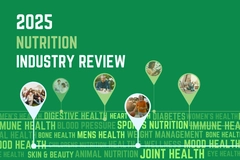
- Industry news
Industry news
- Category news
- Reports
- Key trends
- Multimedia
Multimedia
- Journal
- Events
- Suppliers
Suppliers
- Home
- Industry news
Industry news
- Category news
- Reports
- Key trends
- Multimedia
Multimedia
- Events
- Suppliers
Suppliers
“Dismal” sugar reduction: Industry falls short on voluntary targets as PHE reveals 3% drop

08 Oct 2020 --- The soon-to-be scrapped Public Health England (PHE) is facing a barrage of criticism after its report reveals that there was just a 3 percent sugar reduction in the main products that contribute most to UK children’s sugar intake. This is despite PHE’s initial voluntary goals for industry to achieve a 20 percent reduction by this year.
The reality falls woefully short of the UK government’s objective and the actual reduction of sugar achieved is described as “dismal” as formulation across categories like puddings and confectionary comes up extremely short.
“It’s abundantly clear that the government’s voluntary sugar reduction program is simply not working, after reporting a dismal 0.1 percent reduction in sugar between 2018 and 2019,” says Graham MacGregor, chairman of Action on Sugar and professor of cardiovascular medicine at Queen Mary University of London.
“PHE’s sugar reduction results demonstrate the importance of strong regulation. As we have seen time and time again, the F&B industry responds to firm regulation. Voluntary measures are simply not enough and will give the disappointing results we have seen today,” explains Fran Bernhardt of Sustain, which represents around 100 British public interest organizations.
Notably, products regulated by the soft drinks industry levy (SDIL) have seen a 44 percent reduction in sugar content per 100 ml between 2015 and 2019.
This came into force in the UK in April 2018 and saw the price of sugar-sweetened soft drinks across Britain being pushed up. It was a very long-awaited piece of legislation that is, two years on, generally recognized for a shift in consumers’ purchasing and consumption habits.
Bernhardt details that the income raised has also had a significant positive impact on children’s health through food, physical activity and mental health program investment in schools.
Bernhardt believes, as do many in the health and well-being space, that similar government levies should be placed on other food types.
“Extending the levy to other food product categories is a double win, benefitting the health of all ages,” she argues. Sales weighted average total sugar (g per 100 g) by category for baseline (2015) and year 3 (2019) for retailers and manufacturer-branded products (Source: PHE).
Cereals and dairy see drop
While average overall sugar reduction across all food categories stands at 3 percent, there is a great deal of variation within categories.
Breakfast cereals, yogurts and fromage frais have seen some of the biggest decreases in sales weighted average sugar, with a reduction of around 13 percent between 2015 and 2019.
Unsweetened juices and sweetened milk-based beverages, which are exempt from SDIL, were added to the voluntary program in 2018. Most of these drinks have now reduced sugar levels by at least 10 percent, with pre-packed sweetened milk-based beverages reducing sugar by more than a fifth.
“On sugar reduction, particularly in products such as breakfast cereals, yogurts and ice cream, we have achieved some much-needed progress. This will make it easier for everyone to make healthier choices, but it’s clear more can be done,” comments Jo Churchill, the UK’s public health minister.
Confectionery on the rise
Sugar levels in chocolate and sweet confectionery are relatively unchanged. However, children are likely to be consuming more sugar in this category as product sales have increased, growing 16 percent and 7 percent, respectively, between 2015 and 2019.
Meanwhile, puddings saw a slight increase in sugar content per 100 g between 2015 and 2019. This is attributed to the inclusion of mince pies for the first time in 2019 data when they had not appeared in the baseline.
The next steps
According to PHE, transparent monitoring of the sugar reduction program and further expert advice on the potential levers to address excess sugar consumption will continue to be provided to the government.
Next steps for the wider reformulation this year include the publication of guidelines to improve the nutrient content of commercial baby foods and drinks. There will also continue to be engagement with stakeholders on the reduction and reformulation program where appropriate, says PHE.
In 2021, the next progress report will include the fourth annual assessment of progress by all industry sectors toward achieving the 20 percent reduction target. Proportion of brands showing changes of 2 percent or more in the sales weighted average total sugar per 100 g between 2015 and 2019 (Source: PHE).
COVID-19 creates urgency
These results come just a few months after the UK declared “war on obesity” following the connection with more severe COVID-19 outcomes.
“COVID-19 has highlighted obesity and how important it is to tackle it,” says Churchill.
“Our recent announcement of the obesity strategy includes world-leading measures, such as a TV watershed for advertising food and drinks high in fat, salt and sugar, and consulting on how we can introduce a ban online. If more action is needed to support individuals to lead a healthy life, we will go further to help them,” she continues.
However, it was announced in August that PHE will be scrapped and replaced by the National Institute for Health Protection. Many members of the nutrition sector raised concerns about how this will impact the fight against obesity.
“It’s imperative that whichever organization takes over from PHE implements comprehensive and compulsory reformulation targets across the whole of industry to gradually reduce the amount of sugar and excess calories in food and beverages,” concludes MacGregor of Action on Sugar.
By Katherine Durrell











